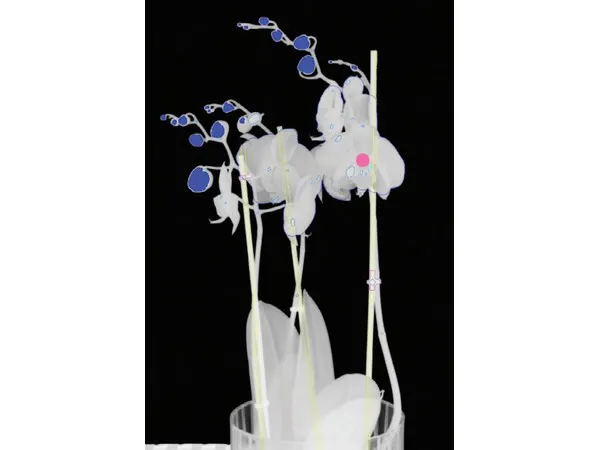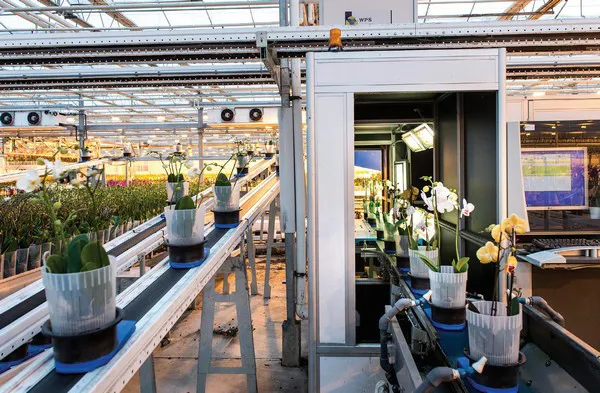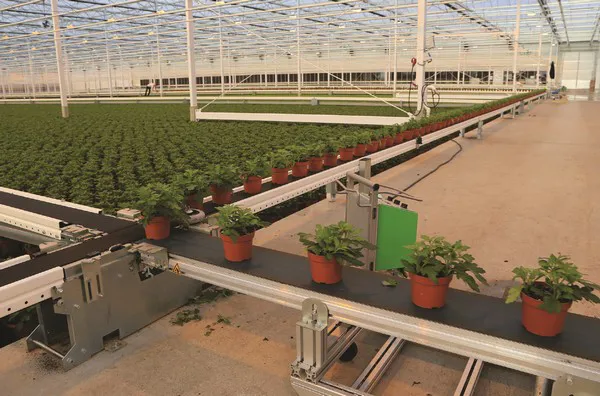On Tuesday 29 September, the Tree & Shrub Growers held an online meeting to discuss how using technology can improve efficiencies in nursery production.
by Matt Ross
The guest speaker was Merijn Kuiper, Automation and Labour Saving Division Manager at Powerplants Australia. The session as ever was expertly hosted by Heath McKenzie of Australian Growing Solutions.
Merijn grew up in Holland and indeed horticulture. His dad was a tomato grower and Merijn spent many a day watching him at work in the greenhouse. He has also worked in the horticulture industry in Brazil and Canada, before arriving on these shores.
Merijn took us on a journey through the various stages of mechanising industry; from mechanisation to mass production to automation and finally machine learning. He believes that no matter what the business and its specialisation, for almost every task in horticulture there is a mechanised solution.
The labour needed to create a product (plant) represents a significant percentage of the overall cost. Australia has among the highest labour costs globally, reduce the amount of labour required to create a product results in increased profit.
The first level of introducing machinery to drive production efficiency is mechanisation; the replacement of a human task with a machine. In our industry, some examples include potting machines, pruning machines, tractors, or water systems. The outcomes are immediate and tangible, from the installation of the very first machine there are significant efficiency gains, labour savings and the consistency delivered by machinery can result in a better quality product, meaning growers can charge more for a plant and less will die.
The second level of mechanisation is mass production; the manufacturing of large quantities of standardised products often using assembly lines or automation tech. It facilitates the efficient production of a large number of similar products. A method first employed by Henry Ford and increasingly used in horticulture. Merijn points out that a conveyor system is not about speed, it’s about consistency and quality.
Merijn shared a video case study of a nursery in Brazil to highlight the efficiencies of a conveyor system. Prior to the introduction of mechanised conveyors, the task of stacking pots required 6-9 employees, after the conveyors it required just two, processing 130% more plants in the same time frame, putting a less physical strain on the employees and ultimately increasing profit.

The third level is automation; the technology by which a process is performed with minimal human assistance. Automation or automatic control is the use of various control systems for operating equipment.
There are a number of potential immediate benefits of introducing automation:
- Increases efficiency
- Replaces repetitive tasks
- Replaces complex tasks
- Improves accuracy and quality
- Production is faster and more prolific
- Upskilling staff (move them away from hard, repetitive menial work and engage them in managing the process).

Merijn suggests that automation suits the Dutch, Belgian, and German approached to horticulture.
“In Holland growers are automating everything. They are willing to spend half a million dollars to save half a cent. They are extremely cost-driven. Their industry is well suited to automation, they use one pot size and often work with single varieties. In Australia, it’s more difficult because of the different pot sizes and the range of stock each grower produces.”
Automation in the Australian horticulture industry is increasing though, indeed all industries globally are increasingly embracing automation, and there is a risk that not doing the same could see nursery’s struggle to compete.
The final level of mechanisation is machine learning; the study of computer algorithms that improve automatically through experience. A subset of artificial intelligence that is all around us, from Siri to email spam. Although uncommon it is employed in horticulture; whether it’s a camera that can grade orchids, de-leafing robots, picking robots, or vision systems to determine whether the fruit is ready to pick.
Merijn is quick to point out that efficiency is not only about installing machinery. It can come from lean manufacturing, processes, and procedures, creating ergonomic work positions, good teamwork, and eliminating repetitive movements by employees having what they need where they are.
He believes that if a nursery is looking to start introducing machinery for the first time, to start with mechanisation (potting machines, pruning machines, tractors, or water systems) before moving on to mass production, automation, or machine learning.
Merijn suggests that any horticulture businesses looking to introduce some form of mechanisation should first visit peers, trade shows, overseas nurseries and learn from them; sharing challenges and solutions. Obviously inviting specialists like Powerplants or Transplant Systems to visit your business and provide expert insight. He also suggests searching for video content on YouTube so you can see the machinery in use.

Merijn feels that achieving a ratio of 80% mechanised production and 20% manual production is a good guide for optimal productivity for Victorian horticultural businesses.
The session concluded with NGIV’s Policy & Technical Manager, David Reid, sharing a funding opportunity that is aiding Victorian horticulture businesses to introduce mechanisation. The Business Adaptation Grant is designed to assist eligible businesses to meet the costs of adapting workplaces to comply with health, safety, and social distancing requirements or adapting to required business changes imposed as a result of the coronavirus (COVID-19) pandemic.
Under the program, individual grants between $10,000 and $300,000 will support eligible businesses cover up to 50 percent of the cost of necessary adaptations to their workplaces.
Grants can also be used to purchase machinery or appliances needed to adapt businesses in order to maintain operations during the pandemic. Contact david@ngiv.com.au to discuss your own potential eligibility.
We’d like to thank Merijn for the level of enthusiasm and knowledge he brought to the discussion. It was fantastic to bring together industry figures from across Australia to share and learn from one another. Proving that meaningful collaboration can continue despite the logistical challenges.
The Tree and Shrub Growers of Victoria is the largest sectional interest group of the Nursery & Garden Industry Victoria (NGIV). The group consists of members of the NGIV involved with nursery plant production and allied trade and provides fantastic networking opportunities across all areas of industry.
Contact NGIV to find out more and learn how to become a member of the Tree and Shrub Growers of Victoria.
For more information: Powerplants
Powerplants
03 8795 7750
sales@powerplants.com.au
www.powerplants.com.au
